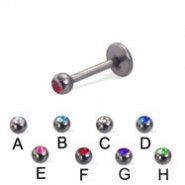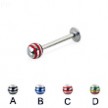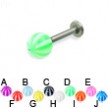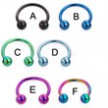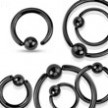Titanium jeweled labret, 16 ga
- Gauge (Thickness): 16 (1.2mm)
- Material: surgical grade solid titanium
- Material: crystal
- Type: labret
Shown: 8mm labret.
| Click on the picture to see a big picture and description of the body jewelry you are interested in. | |||||||||
|---|---|---|---|---|---|---|---|---|---|
|
Epoxy striped ball labret, 16 ga
$6.49
Epoxy striped ball labret, 16 ga
shown: 10mm length |
Beach Ball Titanium Labret, 14 Ga
$4.60
Beach Ball Titanium Labret, 14 Ga
Shown: 10mm labret with 6mm ball. |
Titanium anodized circular barbell, 18 ga
$8.99
Titanium anodized circular barbell, 18 ga
|
Black stainless steel captive bead ring...
$4.99
Black stainless steel captive bead ring with one sided fixed ball, 18 ga
|
||||||
Acrylic
Acrylic jewelry is most often worn in enlarged piercings when light-weight jewelry is desired. Acrylic is not intended to be worn in fresh or unhealed piercings. There is some debate among piercers regarding the safety of long term wear. Acrylic has not been clinically proven to be safe for wear in the body. Jewelry should be inspected frequently for scratches which can irritate the piercing and trap bacteria.
Acrylic is very brittle and will shatter under stress. For releasing beads in captive bead rings, first warm the ring in the palm of your hand; do not use ring-expanding pliers. Acrylic cannot be autoclaved. Extended exposure to any type of alcohol will degrade acrylic jewelry.
